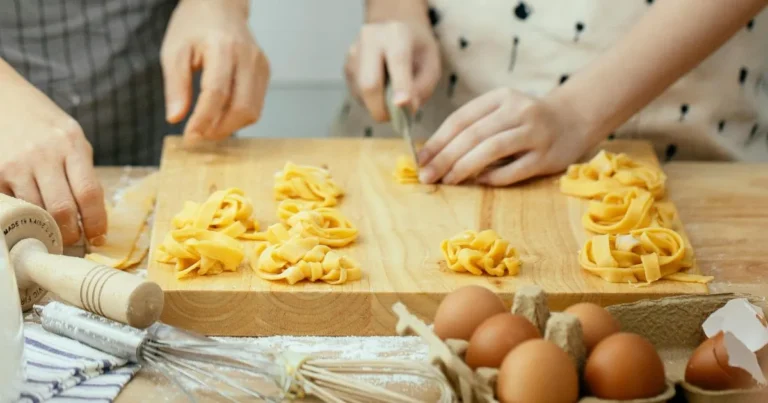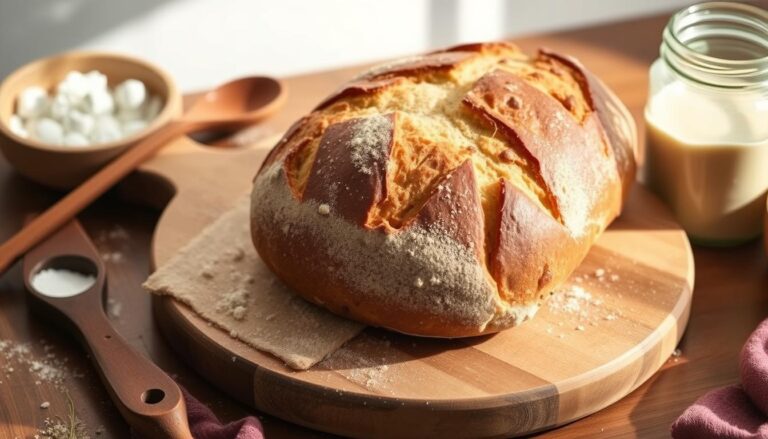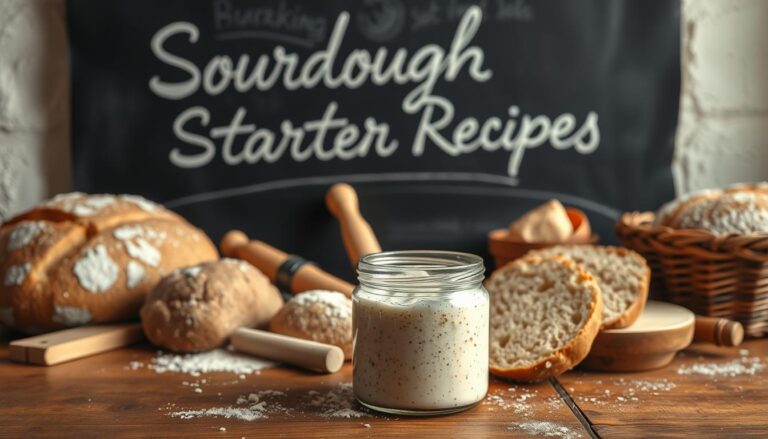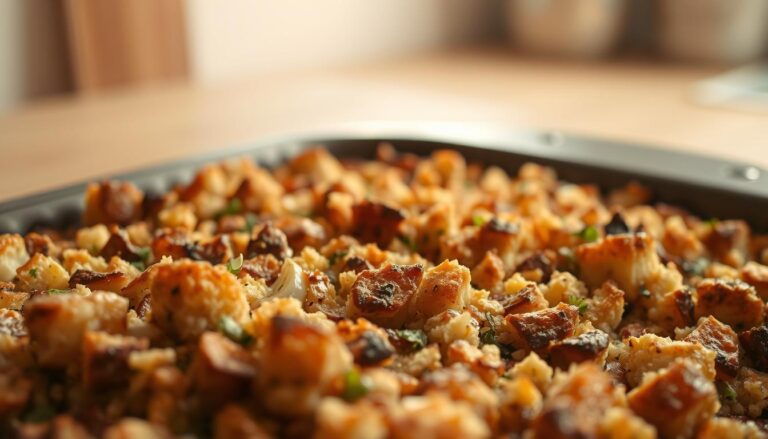How to make sourdough cinnamon rolls
Baking sourdough cinnamon rolls transforms an ordinary breakfast pastry into a culinary masterpiece. Your sourdough cinnamon rolls recipe brings a tangy depth and complex flavor profile that traditional recipes can’t match. These delightful rolls combine the rich tradition of sourdough baking with the comforting warmth of cinnamon and sweet filling.
Crafting the perfect sourdough cinnamon rolls requires patience, skill, and understanding of fermentation. Each step builds layers of flavor, from developing your starter to creating the perfect dough texture. The result is a pastry that’s simultaneously tender, complex, and utterly irresistible.
Whether you’re an experienced baker or a curious home cook, this sourdough cinnamon rolls recipe will guide you through creating bakery-quality treats right in your kitchen. Get ready to elevate your baking skills and impress family and friends with these extraordinary rolls.
Table of Contents
Understanding Sourdough Starter for Perfect Cinnamon Rolls
Sourdough starter is the magical ingredient that transforms ordinary discard cinnamon rolls into extraordinary culinary delights. This living culture of wild yeast and bacteria creates unique flavors and textures that set sourdough baked goods apart from traditional recipes.
Your sourdough starter is a dynamic ecosystem that requires careful attention and understanding. When properly maintained, it becomes a powerful tool for creating delicious discard sourdough cinnamon rolls that are both flavorful and nutritious.
Active vs Discard Starter: Making the Right Choice
Choosing between active and discard starter can significantly impact your cinnamon rolls. Here’s a quick comparison:
- Active Starter: Freshly fed and at peak fermentation
- Discard Starter: Leftover starter between feeding cycles
| Starter Type | Rise Potential | Flavor Profile |
|---|---|---|
| Active Starter | High | Tangy, robust |
| Discard Starter | Lower | Mild, slightly sour |
Maintaining Your Starter’s Health
Consistent care is crucial for a robust sourdough starter. Follow these key practices:
- Feed your starter regularly
- Use consistent flour ratios
- Store at stable temperatures
- Discard excess before feeding
Signs Your Starter is Ready to Use
Recognizing a mature starter is essential for successful discard cinnamon rolls. Look for these indicators:
- Doubles in size within 4-8 hours
- Shows consistent bubbling
- Passes the float test
- Smells pleasantly sour
By understanding your sourdough starter’s nuances, you’ll create cinnamon rolls that are both delicious and nutrient-rich.
Essential Ingredients for Sourdough Cinnamon Rolls Recipe
Crafting delicious sourdough cinnamon rolls starts with selecting the right ingredients. Your sourdough cinnamon rolls recipe requires careful ingredient selection to achieve that perfect balance of flavor and texture.
The foundation of any great sourdough cinnamon rolls recipe begins with high-quality flour. Choose between bread flour for a chewier texture or all-purpose flour for a softer crumb. Each type of flour brings unique characteristics to your final product.
Core Ingredients Breakdown
- Flour: Bread or all-purpose flour
- Active sourdough starter
- Butter or neutral oil
- Milk or water
- Eggs
- Sugar or alternative sweeteners
- Salt
Ingredient Quality Matters
Your sourdough cinnamon rolls will shine when you use fresh, high-quality ingredients. Organic butter, farm-fresh eggs, and pure vanilla extract can elevate your recipe from good to exceptional.
| Ingredient | Purpose | Recommended Type |
|---|---|---|
| Flour | Structure and texture | Bread flour (12-14% protein) |
| Butter | Richness and flavor | Unsalted, room temperature |
| Cinnamon | Primary flavor | Fresh ground Ceylon cinnamon |
Ingredient Substitutions
For those with dietary restrictions, you can explore alternative ingredients. Replace dairy milk with almond or oat milk, use gluten-free flour blends, or swap sugar with maple syrup or honey in your sourdough cinnamon rolls recipe.
Equipment and Tools You’ll Need
Creating delicious sourdough cinnamon rolls requires the right equipment. Preparing your kitchen with essential tools will make the baking process smoother and more enjoyable. Whether you’re a beginner or an experienced baker, having the proper tools can significantly impact your sourdough cinnamon rolls’ success.
Essential Baking Equipment
Your sourdough cinnamon rolls journey starts with investing in quality baking tools. Here are the must-have items:
- 9×13 inch Baking Pan: Provides the perfect space for your rolls to rise and bake
- Large Mixing Bowl: Crucial for preparing dough and mixing ingredients
- Rolling Pin: Helps create a smooth, even dough surface
- Bench Scraper: Assists in cutting and moving dough
- Parchment Paper: Prevents sticking and makes cleanup easier
Optional Tools for Better Results
While not mandatory, these tools can elevate your sourdough cinnamon rolls baking experience:
- Stand Mixer: Simplifies dough kneading process
- Digital Kitchen Scale: Ensures precise ingredient measurements
- Proofing Basket: Helps dough maintain shape during fermentation
- Instant-Read Thermometer: Monitors dough and ambient temperatures
Measuring and Mixing Tools
Accuracy is key when making sourdough cinnamon rolls. Invest in quality measuring tools like:
- Measuring Cups (Dry and Liquid)
- Measuring Spoons
- Kitchen Scale (preferably digital)
- Silicone Spatula for mixing
By selecting the right equipment, you’ll set yourself up for sourdough cinnamon rolls success. Remember, quality tools make a significant difference in your baking results.
Making the Perfect Sourdough Dough Base
Creating the ideal overnight sourdough cinnamon rolls starts with mastering the perfect dough base. Your sourdough journey begins with understanding the delicate balance of ingredients and techniques that transform simple components into a magical, pillowy-soft foundation.
The key to exceptional overnight sourdough cinnamon rolls lies in precise ingredient mixing and thoughtful preparation. Start by combining your active sourdough starter with high-quality flour, creating a robust and flavorful dough that will serve as the canvas for your delicious rolls.
- Use bread flour for optimal gluten development
- Maintain consistent dough hydration
- Knead until smooth and elastic
- Allow sufficient resting time
Gluten development is crucial for achieving the right texture in your overnight sourdough cinnamon rolls. Gentle yet thorough kneading helps create a stretchy, smooth dough that will rise beautifully and deliver that signature sourdough tang.
| Ingredient | Quantity | Purpose |
|---|---|---|
| Active Sourdough Starter | 150g | Provides fermentation and flavor |
| Bread Flour | 500g | Builds structure and texture |
| Milk | 250ml | Adds moisture and softness |
The overnight fermentation method allows your dough to develop complex flavors while fitting seamlessly into your busy schedule. By letting the dough rest and develop slowly in the refrigerator, you’ll enhance the sourdough’s distinctive taste and create a more digestible final product.
Remember that patience is your greatest ally when crafting overnight sourdough cinnamon rolls. Each step of the process contributes to the final, delectable result that will impress family and friends alike.
Creating the Cinnamon Filling
Crafting the perfect cinnamon filling is a crucial step in your sourdough cinnamon rolls recipe. The right balance of flavors can transform your baked treat from good to extraordinary. Your filling should complement the tangy sourdough base while delivering a delightful sweet and spicy experience.
Balancing Sweetness and Spice
The key to an exceptional sourdough cinnamon rolls recipe lies in creating a harmonious filling. Your ideal mixture should include:
- Ground cinnamon
- Brown sugar
- Soft butter
- A pinch of salt
Aim for a ratio that provides depth without overwhelming sweetness. Typically, a 1:2 ratio of cinnamon to sugar works best.
Alternative Filling Options
While traditional cinnamon filling is classic, your sourdough cinnamon rolls can be elevated with creative variations:
| Filling Type | Key Ingredients | Flavor Profile |
|---|---|---|
| Nutty Twist | Ground pecans, brown sugar | Rich, toasted flavor |
| Fruity Blend | Dried cranberries, orange zest | Bright, tangy notes |
| Chocolate Variation | Cocoa powder, dark chocolate chips | Decadent, deep chocolate taste |
Tips for Even Distribution
Achieving uniform filling requires technique. Spread softened butter first, then sprinkle your sugar-cinnamon mixture evenly. Use an offset spatula to create a thin, consistent layer across the entire dough surface. This ensures every bite of your sourdough cinnamon rolls delivers balanced flavor.
Remember, patience and precision are your best tools when creating the perfect cinnamon filling for your sourdough cinnamon rolls recipe.
Rolling, Shaping, and Cutting Techniques
Mastering the art of rolling and shaping sourdough cinnamon rolls can transform your baking experience. The key to perfect sourdough cinnamon rolls lies in technique and precision. Start by rolling out your fermented dough on a lightly floured surface, aiming for an even rectangular shape.
When preparing to shape your sourdough cinnamon rolls, consider these essential techniques:
- Roll the dough to approximately 1/4 inch thickness
- Spread filling evenly, leaving a small border around the edges
- Use gentle but firm pressure when rolling
Cutting your sourdough cinnamon rolls requires special attention. Professional bakers recommend two primary methods:
- Dental Floss Method: Slide unflavored dental floss under the rolled dough, cross the ends, and pull to create clean, precise cuts
- Sharp Knife Technique: Use a sharp serrated knife, wiping between cuts to prevent sticking
| Cutting Technique | Pros | Cons |
|---|---|---|
| Dental Floss | Clean cuts, minimal dough compression | Requires practice |
| Sharp Knife | Readily available, familiar method | Can compress dough if not sharp |
When arranging your sourdough cinnamon rolls in the baking pan, leave slight gaps between each roll. This allows room for expansion during the final proof and ensures even baking.
“The secret to beautiful sourdough cinnamon rolls is patience and precision in every step.” – Professional Baker
Proofing and Fermentation Guide
Mastering the proofing process is crucial for creating delectable overnight sourdough cinnamon rolls. The fermentation stage can make or break your baking results, transforming simple ingredients into a heavenly breakfast treat.
Room Temperature vs Cold Fermentation
When making discard sourdough cinnamon rolls, you have two primary fermentation methods:
- Room Temperature Fermentation: Faster process, typically 2-4 hours
- Cold Fermentation: Slower method, develops deeper flavor profile
Cold fermentation allows for better flavor development and can fit more conveniently into your schedule. Your overnight sourdough cinnamon rolls will benefit from a slow, cold rise in the refrigerator.
Signs of Proper Proofing
Recognizing when your dough is perfectly proofed requires practice. Look for these key indicators:
- Dough has doubled in size
- Gentle indentation springs back slowly
- Visible air bubbles under the surface
Troubleshooting Common Proofing Issues
Discard sourdough cinnamon rolls can present unique challenges. If your dough isn’t rising, check your starter’s activity and room temperature. A sluggish starter or cold environment can impede fermentation.
“Patience is the secret ingredient in perfect sourdough baking.” – Experienced Bakers
Pro tip: Use a clear container to track your dough’s rise and ensure consistent results with your overnight sourdough cinnamon rolls.
Baking Tips and Temperature Guidelines
Perfecting your sourdough cinnamon rolls recipe requires careful attention to baking temperatures and techniques. The right approach can transform your rolls from good to absolutely spectacular.
Preheat your oven to 375°F (190°C) for optimal results. This temperature ensures even baking and creates that perfect golden-brown exterior while keeping the center soft and tender.
- Use an oven thermometer to verify accurate temperature
- Place rolls in the center rack for consistent heat distribution
- Avoid opening the oven door during the first 15 minutes of baking
When baking your sourdough cinnamon rolls, look for these key visual cues:
- Golden-brown top with slight caramelization
- Edges that are slightly crispy
- Internal temperature of 190-200°F when checked with a digital thermometer
| Baking Condition | Recommended Setting |
|---|---|
| Oven Temperature | 375°F (190°C) |
| Baking Time | 18-22 minutes |
| Rack Position | Center of oven |
After baking, let your sourdough cinnamon rolls cool in the pan for 10-15 minutes. This resting period allows the rolls to set and makes them easier to remove without falling apart.
Pro tip: Cover the rolls with aluminum foil if they start browning too quickly, ensuring an even bake throughout your delicious sourdough cinnamon rolls recipe.
Conclusion
Creating sourdough cinnamon rolls is more than just a baking project—it’s an exploration of flavor, technique, and patience. Your journey through understanding sourdough starter, perfecting the dough, and crafting delectable discard cinnamon rolls represents a delightful culinary adventure that transforms simple ingredients into extraordinary treats.
The process of making sourdough cinnamon rolls might seem intricate at first, but each step builds your skill and confidence. By embracing the nuanced techniques of fermentation, shaping, and baking, you’ll discover the rich, complex flavors that only sourdough can deliver. Your willingness to experiment and adapt will be key to developing your unique recipe.
Remember that every batch of sourdough cinnamon rolls is a learning experience. Some attempts might not be perfect, but each one brings you closer to mastering this delicious art. Whether you’re using active starter or clever discard techniques, your commitment to understanding the process will yield increasingly impressive results.
Your baking journey is personal and rewarding. Invite friends and family to taste your creations, share your experiences, and continue exploring the wonderful world of sourdough baking. With practice and passion, you’ll transform simple ingredients into memorable, mouth-watering cinnamon rolls that celebrate the magic of homemade bread.

FAQ
Can I use discard starter for sourdough cinnamon rolls?
Absolutely! Discard starter is a great way to reduce waste and add tangy flavor to your cinnamon rolls. While active starter works best for maximum rise, discard starter can still create delicious rolls with a slightly denser texture. Just ensure your discard is fresh and has a pleasant, mild smell before using it in your recipe.
How long does it take to make overnight sourdough cinnamon rolls?
The total process typically takes about 12-16 hours, including preparation, fermentation, and proofing. You’ll spend around 30-45 minutes actively working on the rolls, with the majority of time dedicated to slow fermentation and rising. Overnight methods allow you to prepare the dough in the evening and bake fresh rolls in the morning.
Can I freeze sourdough cinnamon rolls?
Yes, you can freeze sourdough cinnamon rolls at various stages. You can freeze unbaked rolls after shaping, fully baked rolls, or individual baked rolls. For unbaked rolls, place them in the freezer before the final rise. For baked rolls, cool completely, then wrap tightly in plastic wrap and foil. They’ll keep well in the freezer for up to 1 month.
What type of flour works best for sourdough cinnamon rolls?
Bread flour is ideal for sourdough cinnamon rolls due to its high protein content, which helps develop strong gluten and creates a better rise. All-purpose flour works well too, but bread flour will give you a slightly chewier, more substantial texture. For a softer roll, you can mix bread flour with some all-purpose or pastry flour.
How do I know if my sourdough starter is ready to use?
A mature, active starter is ready to use when it passes the float test. Drop a small spoonful of starter into a bowl of water – if it floats, it’s ready for baking. Additionally, look for signs like doubled volume, lots of bubbles, and a pleasant, slightly sour smell. The starter should be at its peak, typically 4-8 hours after feeding.
Can I make sourdough cinnamon rolls without dairy?
Definitely! You can substitute dairy ingredients with non-dairy alternatives. Replace milk with plant-based milk like almond or oat milk, use vegan butter or coconut oil instead of butter, and choose dairy-free cream cheese for frosting. The key is maintaining similar moisture and fat content to ensure the rolls remain soft and flavorful.
How can I prevent my cinnamon rolls from becoming dry?
To keep your sourdough cinnamon rolls moist, avoid overbaking and be careful not to add too much flour during kneading. Brush the rolls with melted butter before and after baking, and consider covering them with foil during the last few minutes of baking to prevent excessive browning. A water bath in the oven can also help maintain moisture.







